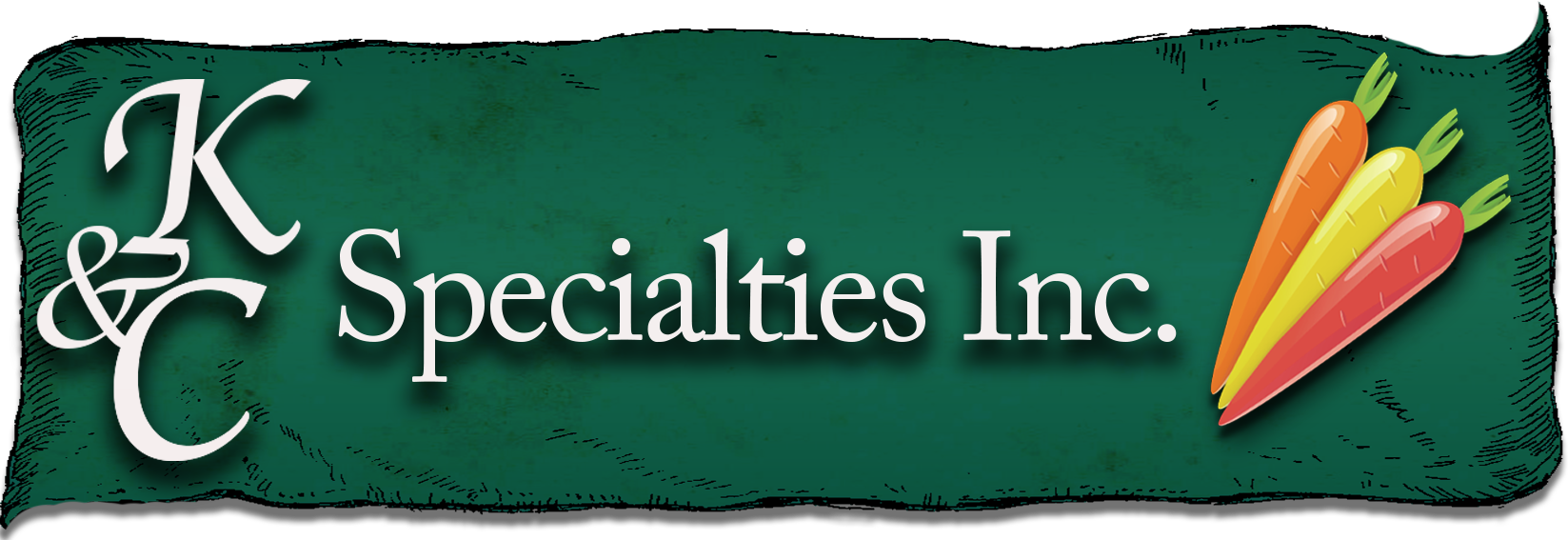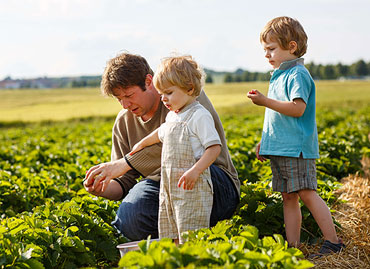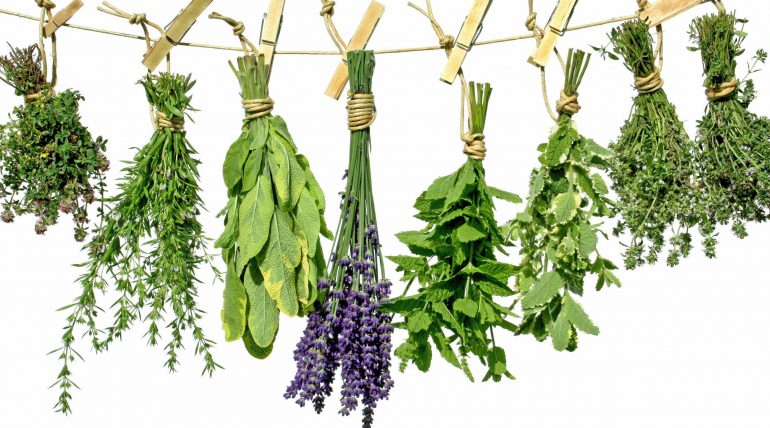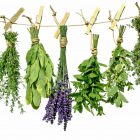Organic foods: Are they safer? More nutritious?
Discover the difference between organic foods and their traditionally grown counterparts when it comes to nutrition, safety and price.
Once found only in health food stores, organic food is now a regular feature at most supermarkets. And that’s created a bit of a dilemma in the produce aisle.
On one hand, you have a conventionally grown apple. On the other, you have one that’s organic. Both apples are firm, shiny and red. Both provide vitamins and fiber, and both are free of fat, sodium and cholesterol. Which should you choose? Get the facts before you shop.
What is organic farming?
The word “organic” refers to the way farmers grow and process agricultural products, such as fruits, vegetables, grains, dairy products and meat. Organic farming practices are designed to meet the following goals:
- Enhance soil and water quality
- Reduce pollution
- Provide safe, healthy livestock habitats
- Enable natural livestock behavior
- Promote a self-sustaining cycle of resources on a farm
Materials or practices not permitted in organic farming include:
- Synthetic fertilizers to add nutrients to the soil
- Sewage sludge as fertilizer
- Most synthetic pesticides for pest control
- Irradiation to preserve food or to eliminate disease or pests
- Genetic engineering, used to improve disease or pest resistance or to improve crop yields
- Antibiotics or growth hormones for livestock
Organic crop farming materials or practices may include:
- Plant waste left on fields (green manure), livestock manure or compost to improve soil quality
- Plant rotation to preserve soil quality and to interrupt cycles of pests or disease
- Cover crops that prevent erosion when parcels of land are not in use and to plow into soil for improving soil quality
- Mulch to control weeds
- Predatory insects or insect traps to control pests
- Certain natural pesticides and a few synthetic pesticides approved for organic farming, used rarely and only as a last resort in coordination with a USDA organic certifying agent
Organic farming practices for livestock include:
- Healthy living conditions and access to the outdoors
- Pasture feeding for at least 30 percent of livestock’s nutritional needs during grazing season
- Organic foods for animals
- Vaccinations
Organic or not? Check the label
The U.S. Department of Agriculture (USDA) has established an organic certification program that requires all organic foods to meet strict government standards. These standards regulate how such foods are grown, handled and processed.
Any product labeled as organic on the product description or packaging must be USDA certified. If it is certified, the producer may also use an official USDA Organic seal.
The USDA makes an exception for producers who sell less than $5,000 a year in organic foods. These producers must follow the guidelines for organic food production, but they do not need to go through the certification process. They can label their products as organic, but they may not use the official USDA Organic seal.
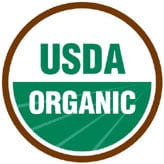
Products certified 95 percent or more organic may display this USDA seal.
The USDA also has guidelines on how organic foods are described on product labels:
- 100 percent organic. This description is used on certified organic fruits, vegetables, eggs, meat or other single-ingredient foods. It may also be used on multi-ingredient foods if all of the ingredients are certified organic, excluding salt and water. These may have a USDA seal.
- Organic. If a multi-ingredient food is labeled organic, at least 95 percent of the ingredients are certified organic, excluding salt and water. The nonorganic items must be from a USDA list of approved additional ingredients. These also may have a USDA seal.
- Made with organic. If a multi-ingredient product has at least 70 percent certified organic ingredients, it may have a “made with organic” ingredients label. For example, a breakfast cereal might be labeled “made with organic oats.” The ingredient list must identify what ingredients are organic. These products may not carry a USDA seal.
- Organic ingredients. If less than 70 percent of a multi-ingredient product is certified organic, it may not be labeled as organic or carry a USDA seal. The ingredient list can indicate which ingredients are organic.
Do ‘organic’ and ‘natural’ mean the same thing?
No, “natural” and “organic” are not interchangeable terms. In general, “natural” on a food label means that it has no artificial colors, flavors or preservatives. It does not refer to the methods or materials used to produce the food ingredients.
Other common food labels should also not be confused with organic labels. For example, the guidelines for certified organic beef include — among a number of requirements — access to pasture during a minimum 120-day grazing season and no growth hormones. But the labels “free-range” or “hormone-free,” while they must be used truthfully, do not indicate a farmer followed all guidelines for organic certification.
Organic food: Is it safer or more nutritious?
There is a growing body of evidence that shows some potential health benefits of organic foods when compared with conventionally grown foods. While these studies have shown differences in the food, there is limited information to draw conclusions about how these differences translate into overall health benefits.
Potential benefits include the following:
- Nutrients. Studies have shown small to moderate increases in some nutrients in organic produce. The best evidence of a significant increase is in certain types of flavonoids, which have antioxidant properties.
- Omega-3 fatty acids. The feeding requirements for organic livestock farming, such as the primary use of grass and alfalfa for cattle, result in generally higher levels of omega-3 fatty acids, a kind of fat that is more heart healthy than other fats. These higher omega-3 fatty acids are found in organic meats, dairy and eggs.
- Toxic metal. Cadmium is a toxic chemical naturally found in soils and absorbed by plants. Studies have shown significantly lower cadmium levels in organic grains, but not fruits and vegetables, when compared with conventionally grown crops. The lower cadmium levels in organic grains may be related to the ban on synthetic fertilizers in organic farming.
- Pesticide residue. Compared with conventionally grown produce, organically grown produce has lower detectable levels of pesticide residue. Organic produce may have residue because of pesticides approved for organic farming or because of airborne pesticides from conventional farms. The difference in health outcomes is unclear because of safety regulations for maximum levels of residue allowed on conventional produce.
- Bacteria. Meats produced conventionally may have a higher occurrence of bacteria resistant to antibiotic treatment. The overall risk of bacterial contamination of organic foods is the same as conventional foods.
Are there downsides to buying organic?
One common concern with organic food is cost. Organic foods typically cost more than their conventional counterparts. Higher prices are due, in part, to more expensive farming practices.
Food safety tips
Whether you go totally organic or opt to mix conventional and organic foods, be sure to keep these tips in mind:
- Select a variety of foods from a variety of sources. This will give you a better mix of nutrients and reduce your likelihood of exposure to a single pesticide.
- Buy fruits and vegetables in season when possible. To get the freshest produce, ask your grocer what is in season or buy food from your local farmers market.
- Read food labels carefully. Just because a product says it’s organic or contains organic ingredients doesn’t necessarily mean it’s a healthier alternative. Some organic products may still be high in sugar, salt, fat or calories.
- Wash and scrub fresh fruits and vegetables thoroughly under running water. Washing helps remove dirt, bacteria and traces of chemicals from the surface of fruits and vegetables, but not all pesticide residues can be removed by washing. Discarding outer leaves of leafy vegetables can reduce contaminants. Peeling fruits and vegetables can remove contaminants but may also reduce nutrients.
by https://www.mayoclinic.org/
